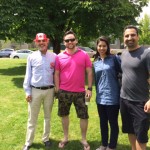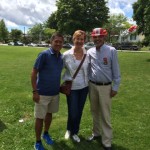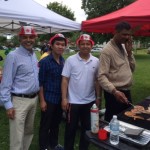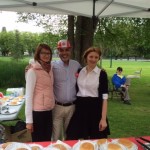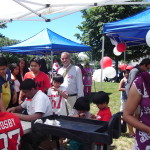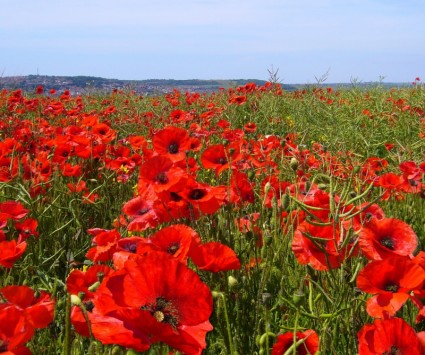
Remembering the Brave on November 11th
Most of us will pick up a poppy on our way out of the local grocery store or bank by donating a coin or two and pin it on our jacket as a sign of respect for our soldiers. On November 11th we will remember the brave men and women who died in the line of duty for our country.
When we look around our neighbourhoods today, our community is made up of people from a variety of cultural backgrounds many of whose ancestors served in the Canadian Army during World War I. Aboriginal Canadians, Chinese Canadians and Sikh Canadians all participated in the line of duty in the war to end all wars.
Many Native communities were not supportive of the war effort as they wanted Great Britain to recognize them as independent nations first. This was not granted and the Aboriginals were exempted from the Compulsory Military Service Act in August 1917. Nonetheless nearly 4,000 Aboriginals (Inuit, Métis, and other First Nations Canadians) and many of them from isolated and remote areas of Canada left the comfort of their homes and families to serve in the Great War.
About 300 Chinese Canadians voluntarily enlisted during World War I even though they were denied their fundamental rights by the Canadian government of voting and entering certain professions. Chinese Canadians were also not conscripted as part of the Military Service Act.
There is only a record of 10 Sikh Canadians who fought in WWI though thousands of Sikhs from India fought in Europe for the British Empire. One of these 10 Sikh Canadians was the Victory Medal recipient Private Buckam Singh who came to British Columbia from Punjab in 1907. He had moved to Toronto in 1913 and enlisted in the Canadian Expeditionary Force in early 1915. He died in a Kitchener, Ontario, hospital in August 1919. He was buried in Kitchener’s Mount Hope Cemetery, the only known First World War Sikh Canadian soldier’s grave in the country. All of these brave heroes had one thing in common, loyalty for the country in which they lived in.
Let us pause from our daily tasks tomorrow and remember the sacrifice and service of men and women who have lost their lives so that we might live our lives in peace and security. Please participate in your local Remembrance Day ceremony. Check out the list of events the City of Vancouver will be hosting tomorrow.
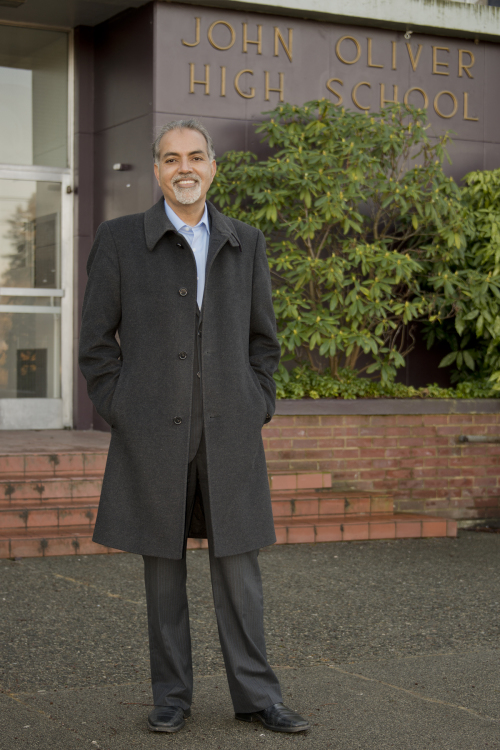
10 Things You Didn’t Know about South Vancouver
10 Things You Didn’t Know about South Vancouver
South Vancouver is very dear to my heart. It is where I have spent most of my life, where I graduated high school, where I’ve worked many jobs, and where I met my wife. Like many other immigrants to Vancouver, South Vancouver has played an important role in my life, and yet I am always learning more about the area’s vibrant history and current landscape. Here, I share 10 interesting facts about the area that you might not know:
- South Vancouver was originally its own municipality: The original southern boundary of Vancouver was 16th avenue, but settlers began clearing land for farms along the north arm of the Fraser River in the 1860s, and built a narrow clearing through the forest to connect to Granville Townsite (now Vancouver). That clearing would later become North Arm Wagon Road and eventually Fraser Street. The Municipality of South Vancouver was incorporated in 1892, and only amalgamated with Vancouver in 1929.
- South Hill is one of the oldest shopping areas in Vancouver: The stretch on Fraser Street from 41st Avenue to 50th Avenue has been bustling since a streetcar was built down Fraser Street to 49th Avenue in 1909. Some residents remember iconic businesses from that time such as Tom Fox Hardware (est. 1908) and Curry Grocers (est. 1910), and some of the original buildings from that time still stand.
- Speaking of South Hill, the community members have built a fabulous website: The South Hill Community Website is an amazing project, almost like an online community centre, that links to projects, events, and businesses in the area. One of the most impressive projects is Inside Stories, a user friendly and beautiful interactive part of the website where users can click on images of local homes and shops to hear the stories of the residents inside.
- John Oliver Secondary School is one of the oldest in Vancouver: Originally established as South Vancouver High School in 1912, my high school started out as just two surplus classrooms at Lord Selkirk Elementary. A new structure near the current location was built in 1920 on the site of the original Wilson Farm, and the school was renamed John Oliver Secondary School. That building is now called “The Barn” and still stands today behind the current structure. Many alumni like me are proud of J.O. and continue to support projects at the school like the Wonder of Reading program.
- The Ross Street temple was built by the oldest and largest Sikh organization in Canada: The Khalsa Diwan Society was formally established in 1906, making it the oldest Sikh organization in the country. Vancouver’s first Sikh Gurdwara (temple) was built on 2nd Avenue by the Society in 1908 (which means it may be the oldest Gurdwara on the American continent). As the Sikh community in Vancouver grew, a larger temple was eventually necessary and the new construction on Ross Street, designed by renowned architect Arthur Erickson, was completed in 1970.
- The Vancouver South riding has one of the largest immigrant populations in the province: From the earliest days, the area has attracted hard working individuals and families from all over the world looking to build a better future in Canada. Today, 75% of Vancouver South residents are either immigrants or children of immigrants (compared to about 50% in Vancouver as a whole), about one-third of those are of Chinese ancestry, 15% are from India or Pakistan, and a growing population are people with Filipino or Vietnamese heritage.
- Langara College has graduated over 76,000 students: Originally part of Vancouver City College, Langara started in 1965 and moved to its current location on 49th avenue in 1970. In 1994 it was established as an independent public college and now offers a variety of programs for over 21,000 students every year. Since 2007, Langara has recognized the contributions of exceptional graduates with the Outstanding Alumni Award; recipients include journalist Simi Sara, former mayor Sam Sullivan, and acclaimed author Carmen Aguirre.
- Everett Crowley Park in Champlain Heights was built on a landfill: Along with Killarney, the Champlain Heights area in the southeast corner of Vancouver was one of the last areas in the city to be urbanized. The area where the park sits now was originally a coniferous forest housing a natural ravine and waterfall. Later the land was used for hunting and logging and in the 1940s it became the Kerr Road Dump and operated as a landfill until 1967. In 1987 it was re-opened as a park and named for Everett Crowley, a long-time resident of the area who served as a Park Board Commissioner in the 1960s.
- Killarney Market is famous: Killarney Market on the corner on East 49th Avenue is well-known for being one of the only places in the city to find certain Latin American, Asian, and European products along with a wide selection of affordable everyday groceries, fresh baked goods, deli meats, plants and flowers. It is also where Burnaby-born, Grammy-nominated singer Michael Bublé filmed the music video for “Haven’t met you yet”. The video features Bublé singing and dancing throughout the store and parking lot, features a cameo by the West Vancouver Youth Band, and has had over 4 million views on YouTube.
- The River District will eventually house about 15,000 residents: Originally the Canadian White Pine Mill, later known as the East Fraserlands, the River District is an area of over 50 hectares along the Fraser River between Kerr Street and Boundary Road. A big construction project is underway which will include 6000-7000 homes, retail space, offices, an elementary and secondary school, parks, recreational amenities, and more.
The River District project is just one of several such projects underway in South Vancouver. From forest, to farms, to lumber and plywood mills, to family-centered communities, to an outstanding institution of higher education, I love to learn about how the area has grown and changed over the years. South Vancouver is a fascinating part of the city with a very rich history, and much potential for a very bright and prosperous future.
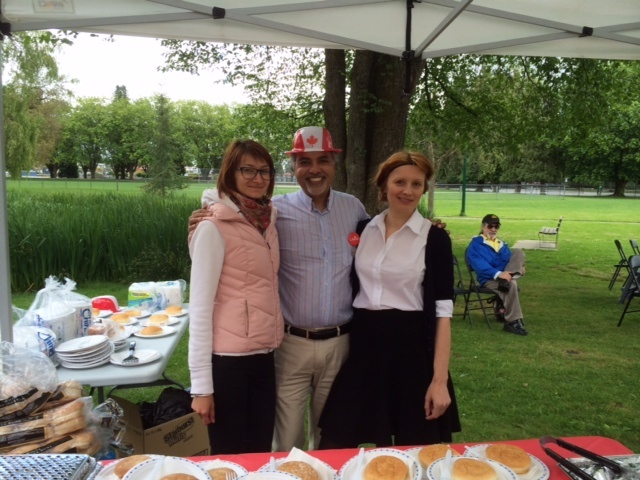
Celebrating Summer in Vancouver South
On Sunday, June 29, we hosted a wonderful community summer barbecue and picnic at Memorial South Park.
Over three hundred enthusiastic friends, supporters and volunteers, mostly from Vancouver South, joined us for good conversations and great food. Some of us reminisced about our high school days at John Oliver. Lots of laughter and fun!
Thanks to everyone for making it a great day!
- Barj with Gavin, Harmon and Ajay
- Barj with Jojo and Isa Solacito
- Barj with Edel and his children and Ching and Nellie
- Barj with Robert, Edel and Gurjit
- Barj with volunteers
- Michael Lam, Raj Sidhu and Barj
- Barj to his right with Nellie Vandt, Celyna Sia Sherest and friends
- Barj with Jaswinder Sandhu and Anna Funk
- Barj with Victor and Dora Kliewer and Kuljinder Shoker

Celebrating Canada
Celebrating Canada Day at Sunset Community Centre.
There is no other city like Vancouver, and absolutely no other country like Canada. I’m proud to be Canadian!
And what a Canada Day celebration it was at Sunset Community Centre this year! Wonderfully hot and everyone happy, it was a great turnout with fun-filled activities for all.
There were lots of kids running around with our flag painted on their faces, while other enjoyed delicious food at the community centre. Thank you to the organizers for putting on the party. Happy Canada Day!
- Celebrating Canada Day
- Barj with the architect working on the Sunset Community Concept Master Plan
- Barj with Patty Sahota (former BC MLA) and her niece
- Barj with Jennifer and Doug Clarke, and Manjit Thandi
- Barj with Bhalwinder and Mark, both directors with the Sunset Community Centre Association











